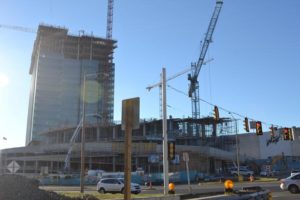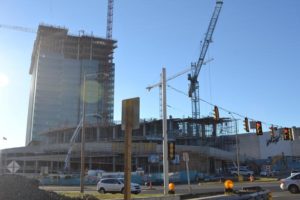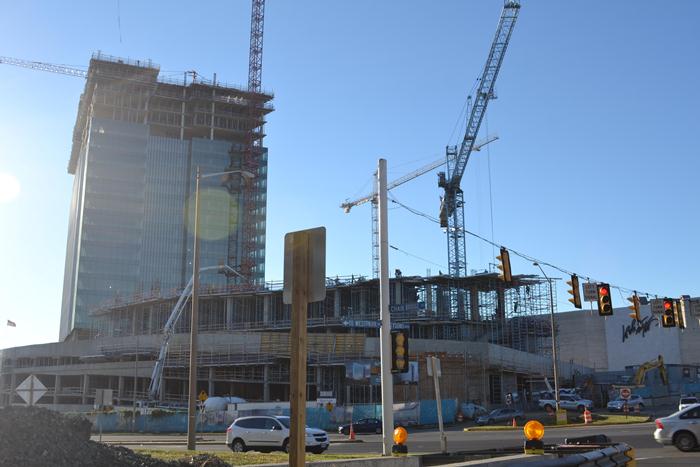 This week the Washington Post reported that vacancy rates are up in Tysons for commercial and residential development, which is pushing lease rates down for both. In residential development the increase in vacancy is attributable to an additional 350 units that came online this year, though demand remains high. In commercial use the increase is attributable to a slowing in government contracting.
This week the Washington Post reported that vacancy rates are up in Tysons for commercial and residential development, which is pushing lease rates down for both. In residential development the increase in vacancy is attributable to an additional 350 units that came online this year, though demand remains high. In commercial use the increase is attributable to a slowing in government contracting.
By no means is the increase in vacancy for commercial a sign that the sky is falling; commercial vacancy is still better than the national average and it has not slowed any leasing activity at the new Tysons Tower which already over 50% under contract. In fact some of the increase in vacancy comes from buildings that have been vacated in preparation for either demolition and reconstruction, or major refurbishment such as at SAIC’s campus by Meridian, as well as several offices along Westpark within the limits of Arbor Row.
However, new construction coming online, and some shifting from older office spaces to those newer spaces has created a visible increase in vacancy. This shouldn’t shock anyone who is aware of the concept of supply and demand. New supply, shiny and full of amenities, is coming to the market for essentially the same price as what used to be considered new and shiny a decade ago. So what does the market do to adjust to the new reality? Slightly older stock decreases prices to compete, and far older stock compares the value of being a bottom-tier lessor or to redevelop.
 This is the development cycle, and we are seeing it in effect as Tysons continues to transform.
This is the development cycle, and we are seeing it in effect as Tysons continues to transform.
The same is occurring in residential development where average rents lowered nearly $100 per month compared to this time last year. Many critics of the new Tysons developments complain it will push rents too high for existing residents, but they are not looking at where the development is occurring.
Very few existing units are being proposed to be knocked down to build new residential units; in fact only the multi-year phased transition for the Commons of McLean is currently proposing this scenario. Most of the new buildings are infilling parking lots, unused and overgrown parcels, and mushroom shaped dated offices. Just like with commercial development, the introduction of this new stock will provide a downward pressure on rates on older units without modern amenities. This will be counteracted by the introduction of metro and better walkability/retail, however over the long term the presence of additional density will help ease prices not increase them while providing more options for residents.
The future of Tysons really falls into a grey area between the two extremes. Prices won’t extend exponentially higher forcing small businesses and residents out, but the average price of the city, because of a general shift to newer construction, will likely go up. However, that won’t mean that every unit in Tysons will be priced out of the grasp of middle class residents. With any development cycle that is improving the ratio of supply and demand there will be a range of lease opportunities from lower cost older units to higher priced new construction.

